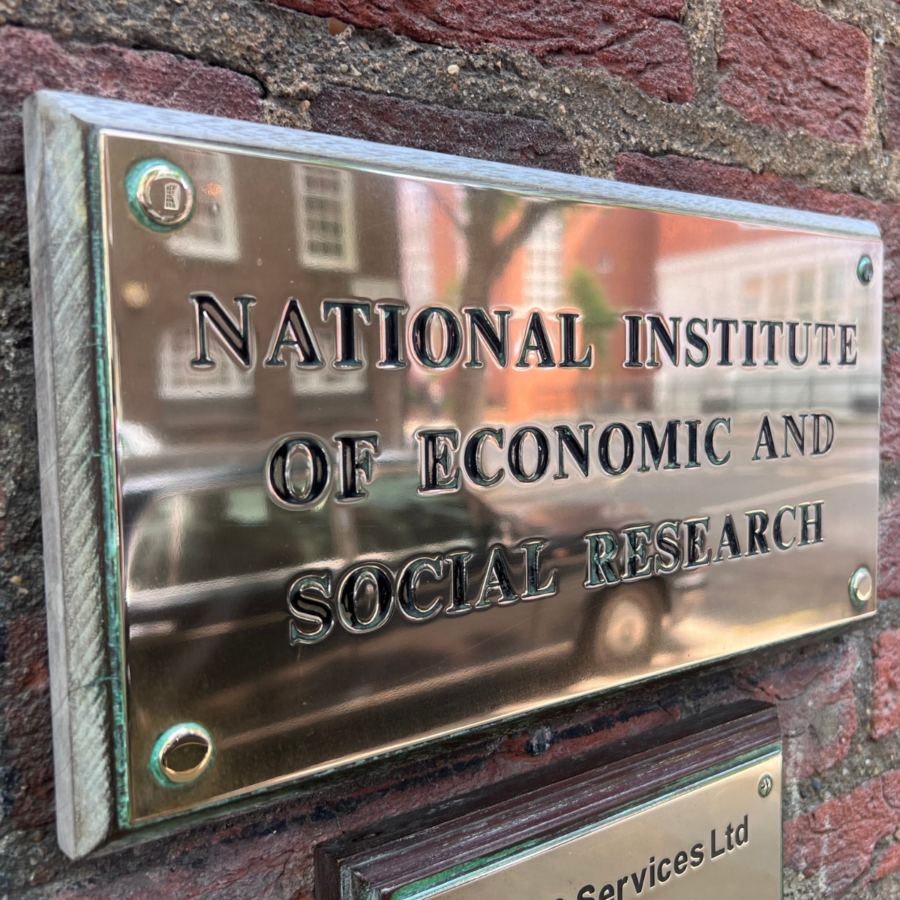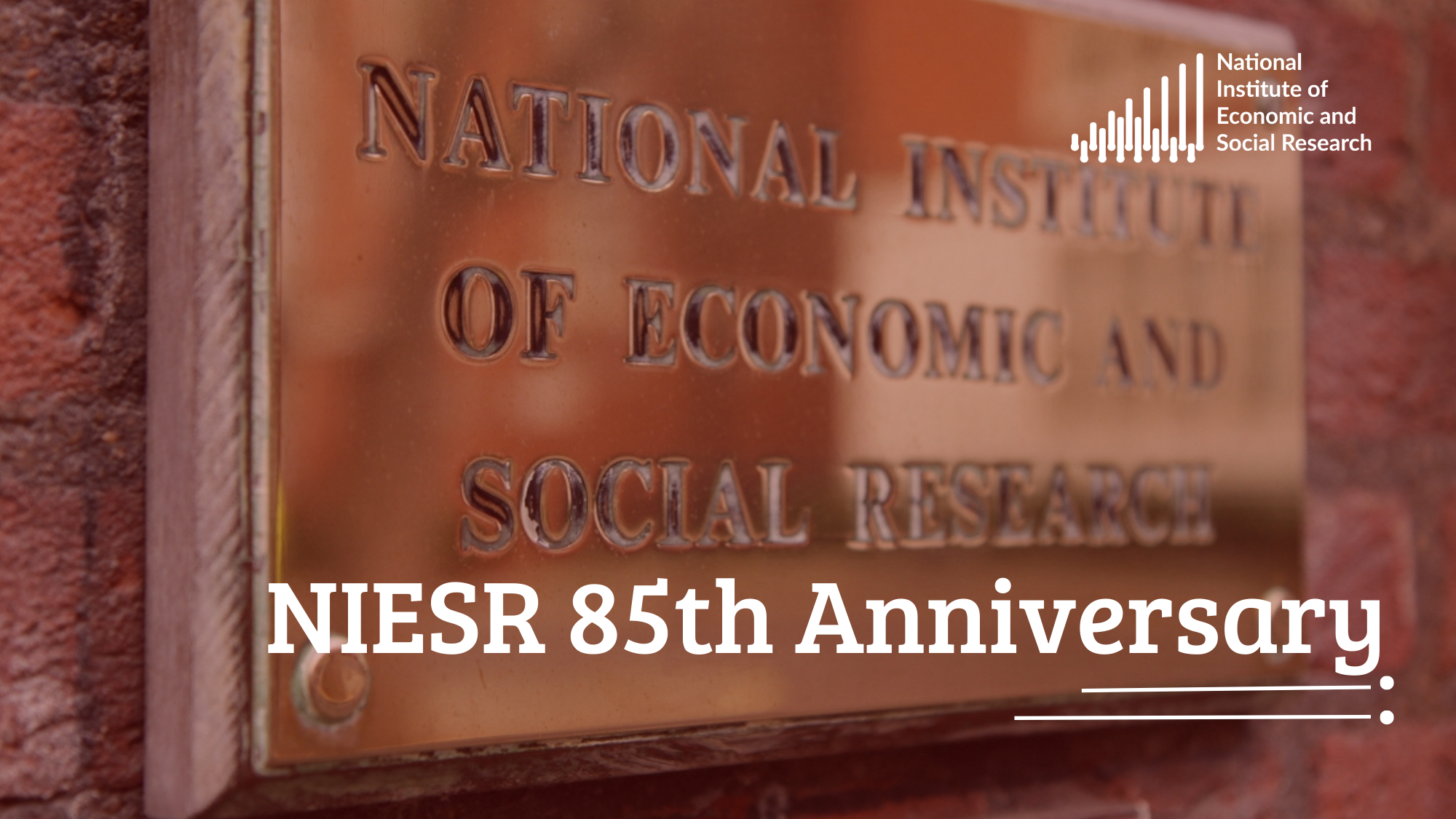85 Years of NIESR
On 2 June 1938 with funding from the Rockefeller Foundation, the Pilgrim Trust, the Leverhulme Trust and the Halley Stewart Trust, the National Institute of Economic and Social Research was formed. President of NIESR Sir Paul Tucker sits down with our Director to discuss the last 85 years, and what makes the Institute unique.

What has been special about the work of the Institute over the past 85 years?
There has been, I think, a common thread in the work of the Institute since its establishment. We have provided a platform for rigorous work focused on economic and social policy undertaken by an array of impressive individuals and teams that have found a natural home sitting between academe and policy but with absolute independence to let the analysis speak. We were perhaps the original critical friend. The Institute gave Phyllis Deane her first academic job in 1942. And also provided a home for many European refugees who worked on economic planning during the war, Thomas Balogh and Hans Singer had, for example, been on the staff. There were on average around 10 research staff in the 15 or so years of the Institute, we are now around four times that size.
The Institute then and now works through a maze of offices in Georgian buildings based off Smith Square, which provide an unashamedly traditional workplace with library and separated offices. But this also offers an excellent thinking space and allows easy working relations to be established with officials and journalists. More recently, as the study of the UK economy has been increasingly relegated by both academe and the City, the Institute has played an increasingly important role in ensuring that the narrative on the UK economic and social performance is not dominated by partisan views.
On the core work, for the first 30 plus years NIESR, the UK (indeed the developed world) was still on a commodity-based monetary standard. After Bretton Woods unravelled, the territory was uncharted. Has inflation targeting provided a good anchor? Does it depend a lot on the people?
The move away from a commodity-based currency to fiat has been a major change, which occurred in the early 1970s. In principle, it allowed policy rates to reflect domestic conditions directly rather than imposing domestic adjustment to meet an external constraint. But it took a generation for us to work out how to do that properly under inflation targeting with an independent central bank. In the interim, policy arguably played a role in stoking up economic volatility as famously suggested by the Institute’s Christopher Dow. The relative success of nominal economic policy over the quarter of a century from 1997 tells us that much was learnt.
But we also know that we cannot altogether ignore international constraints because money markets, forex dealers and bond traders are all keenly watching events, as the events around last year’s mini-budget illustrated. While some argue the secular decline in the net international investment position is not a binding constraint, I worry that it reflects the wrong mix of consumption versus investment and leaves the country more vulnerable than it should be to a change in investor sentiment, which ultimately reduces degrees of freedom.
Compared with 85 years ago, fiscal policy plays a much smaller role in stabilising the economy. Plenty of people think that was a problem over the past decade. But is there anything like a credible fiscal rule that would make room for more fiscal support when depression rears its head?
James Meade and our former Director Martin Weale made a strong case to be concerned about the co-ordination of monetary and fiscal management under an independent central bank. To be clear though the historical record of so-called demand management prior to the current settlement was far from ideal. But there is a case to consider that following the great financial crisis of 2008-09, fiscal policy was providing a deflationary impulse with a planned squeeze in government consumption and investment. And this was offset by looser than otherwise monetary policy, which on a secular basis supported asset prices, and helped entrench existing levels of wealth inequality. The sequence of arbitrary fiscal rules that we have followed since 2010, seeking to reduce public debt to GDP, have therefore not helped and their targets have not been achieved.
So I am not sure that it possible to write down a timeless fiscal rule in the way we can for monetary policy. While we do want public debt to be falling relative to GDP in normal times, what we can and should think about are horizons that fall outside of Parliamentary cycles, and also score more adequately government expenditure and reforms that will over time help the supply side of the economy. In other words, we want to force fiscal policy to think about the long run, as it seems otherwise to be distorted by the political horizon of short-termism.
Oddly, if we turn to finance, NIESR’s founders lived closer to the kind of financial system we have now than for nearly forty years after WW2. Has NIESR given enough attention to financial stability since the mid-1980s?
You and I have discussed this many times before. Financial stability is not only hard to define, as it encompasses many types of firms living in a complex network, but there is also a tendency for overengineering in the sense that we may wrongly try to eliminate all measurable risks. I would prefer us to be honest and say, we live in a risky world and things can and will go wrong. This overengineering approach has a number of problems: first we may end up being overoptimistic because there are risks we cannot measure, so-called Knightian uncertainty.
Secondly, we may also be straying into deeply political territory as we will be denying a cohort of people with “riskier” characteristics a chance to participate in financial contracting. Poorer families may present, in some sense, a riskier financial counterpart but the augmentation to their welfare, and thus to that of society, may be greater.
Finally, we may be encouraging investment officers in being too safe in asset allocation and this may have repercussions for economic dynamism, because track records and mono-policy are preferred to the young and the new. I am not sure about the importance of these observations but we are actively trying to think about the relationship between finance, its stability and the prospects for national well-being. And that is a new and welcome direction for us.
Many economists have tended, following Musgrave, to regard policies on aggregate efficiency, distributional issues and macroeconomic stabilisation as separate spheres. You’ve been trying to overcome that. Can you say something about how to do that without blurring everything into everything else? What would the founders have thought?
The founders, as part of that mid-twentieth century push to improve the lot of working people, wanted the Institute to promote better policy making. Indeed, I deal with something of this democratic transition from taking the state of nature as given to trying to improve the people’s lives, as a way of understanding the sweep of monetary policy making in my book, The Money Minders. Clearly both Beveridge and Keynes, as privileged Englishmen, understood this requirement very well.
And so in the third decade of the twenty-first century we have a priority and vision to map and understand much better the relationship between aggregate and distributional outcomes as a way of getting the country onto a more acceptable growth path. For example, developing the correct policy response to high inflation under full employment needs a careful analysis of its impact on households across the income distribution and careful questioning of why families with one or two wage earners do not have sufficient savings and are so reliant on state support. There is a regional, skills and infrastructure-based explanation for much of these different experiences that we are working towards and with which, I hope, our founders would be pleased.
